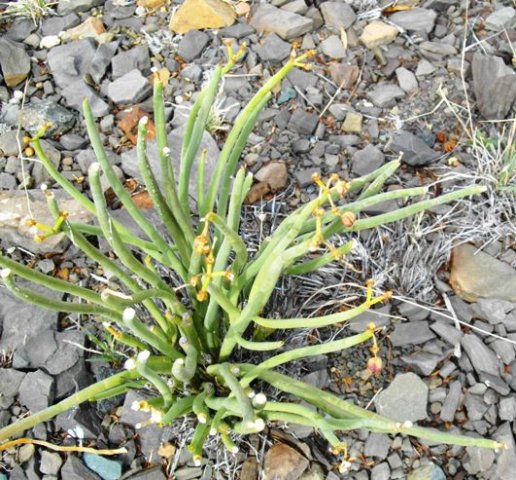Euphorbia burmannii

The grey-green, sparsely branched stems of Euphorbia burmannii are roughing it here. The stems are smooth and hairless. The small new leaves found at the top on the new stem growth for a short period only have already come and gone for the season. The flowers are also gone. Some dry or drying seed capsules remain on the persistent stalks.
Porcupines sometimes seek out these plants for feeding on the rootstocks when they roam the veld at night.
This plant was encountered in the Karoo National Park near Beaufort West late in October, when high temperatures are already common in this area although summer has not yet arrived (Vlok and Schutte-Vlok, 2010).

